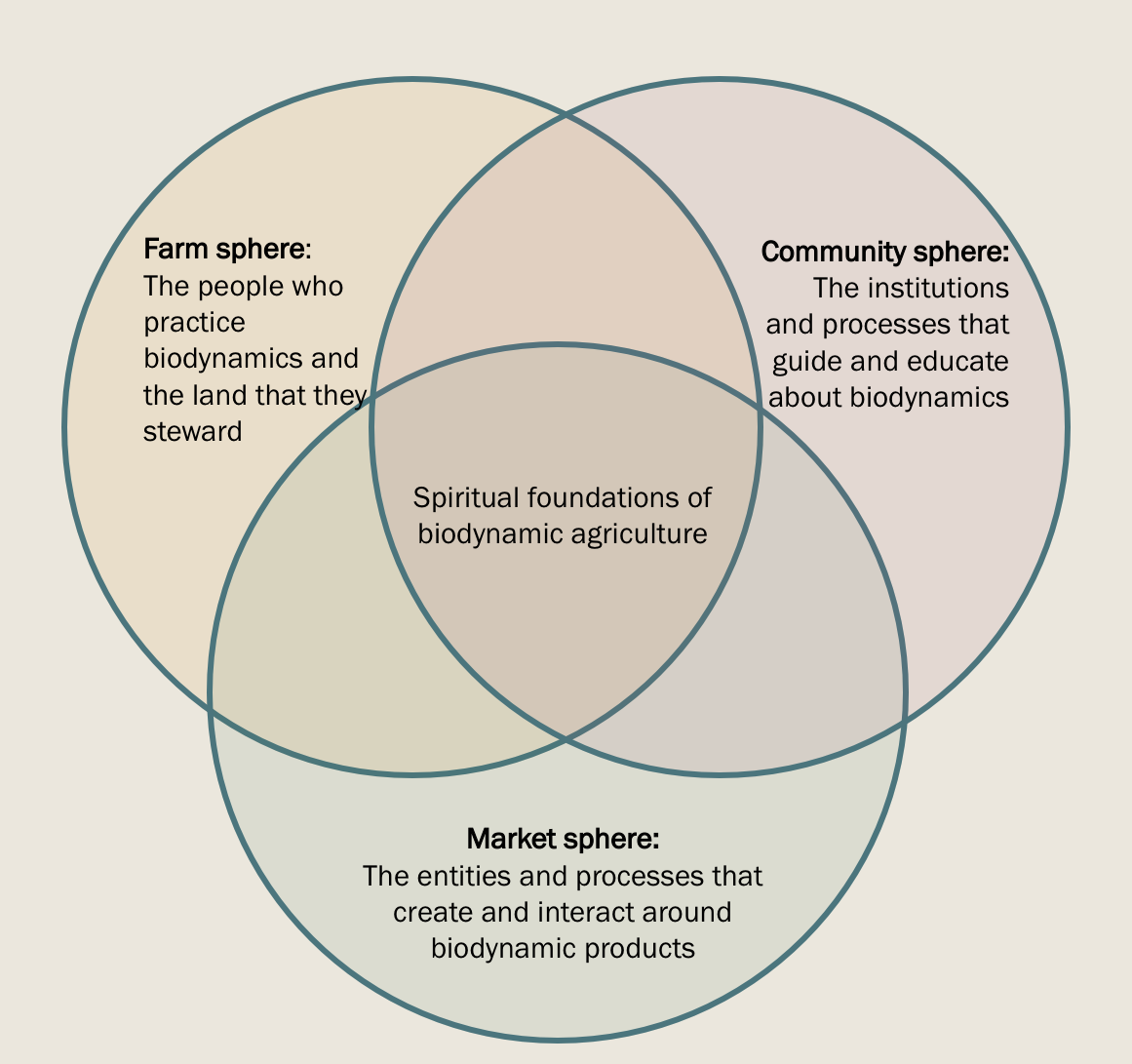
By Thea Maria Carlson
Over the course of 2018, the Biodynamic Association, Demeter USA, the Josephine Porter Institute, and other partners co-led a collaborative process to imagine the future of biodynamics in the United States, with an eye toward the 100th anniversary of Rudolf Steiner's lectures to farmers in 2024.
Originating out of the recognized need for biodynamics to step into a larger role in addressing the many challenges currently facing humanity and the Earth, as well as a desire to better align the work of the various organizations in the biodynamic community, this ambitious project set out with the goal of creating a 'vivid picture' that inspires and enlivens us, supports us in developing closer collaboration, and reminds us of what is most important as we work to deepen and expand the biodynamic impulse and all that it can offer to the world.
Biodynamic Movement Visioning Project Design
The Biodynamic Movement Visioning Project was collaboratively led by a convening group of five leaders from across the biodynamic community: Thea Maria Carlson, Biodynamic Association; Elizabeth Candelario, Demeter USA; Pat Frazier, Fellowship of Preparation Makers and Josephine Porter Institute; David Byrnes, Yellow Barn Biodynamic; and Steffen Schneider, Hawthorne Valley Farm, the Institute for Mindful Agriculture, and the Agriculture Section of the Anthroposophical Society.

The convening group engaged Ag Innovations to co-design and facilitate the process, which was supported by funding from RSF Social Finance and several individual donors, as well as in-kind donation of space from Paicines Ranch.
At the 2018 Biodynamic Conference in Portland, Oregon, the convening group shared a report on the process and elements of the emerging vivid picture. Selected slides from that presentation are included below. The full deck of slides is also available as a PDF.
The Biodynamic Movement Visioning Project was structured into three phases:
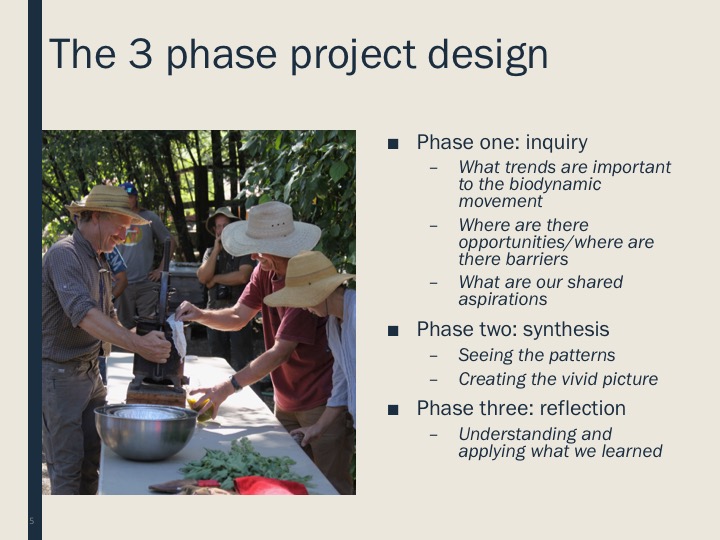
Phase One: Inquiry
Ag Innovations, with the support of the convening committee, held a kick-off webinar on March 20, 2018 to introduce the visioning project and begin soliciting nominations for focus groups. The webinar was attended by 47 organizational and individual leaders in the biodynamic movement. Slides and a recording of that webinar are available for review.
Focus Groups
We invited all participants in the kick-off webinar to submit nominations for focus groups. We asked for nominees who were active in one of seven aspects of biodynamic work: farmers/ranchers, gardeners/homesteaders, processors/distributors/retail, certified entities/certifiers, academia/research/advocacy, education, and preparation makers. We received 100 nominations and, between April-May, we held eight focus groups with three to nine participants in each group. Fifty individuals total participated in the focus groups, which consisted of small-group dialogues on Zoom video conference that lasted 90 minutes each. The focus groups were a key part of the discovery stage of the project and helped to identify key themes within the movement.
All the focus groups responded to the same basic set of questions:
- Introductions: How do you fit into the biodynamic movement? (Including name, organization, location)
- Thinking ahead six years, what does success for the biodynamic movement look like to you? How would we know we are succeeding?
- What are three things we could do as a movement to help achieve this success?
- Every movement has challenges. What is, from your perspective, the biggest challenge we face creating the success you described earlier?
- Let's look at the opposite side of this: what is our biggest asset in creating success?
- Closing reflection: Having listened to everything today, what is one of the suggested actions that we could do together that you would be excited to be part of and contribute to?
Follow-up questions to go deeper were asked where appropriate and where there were points of particular interest.
Movement Survey
Based on data collected from the focus groups, we created a survey that we used to help validate and prioritize what we learned from the focus groups. The goal of the survey was to get very broad engagement from biodynamic movement members in shaping the vivid picture. It was a way for many, many people to weigh in on the themes and priorities that can shape our movement.
The survey was distributed to email lists of the biodynamic community available to the convening committee, including the BDA, Demeter, JPI, Hawthorne Valley, and other smaller lists totaling more than 18,000 subscribers. The survey was open from June 20 to July 9, 2018, and garnered 784 responses. Full results of the survey are available for review.
Phase Two: Synthesis
The second phase of the process involved synthesizing what we learned from the focus groups and survey, and convening a group of leaders from across the biodynamic movement to explore the insights and questions from the first steps of the process together.
Key Themes and Potential Actions from Focus Groups and Survey
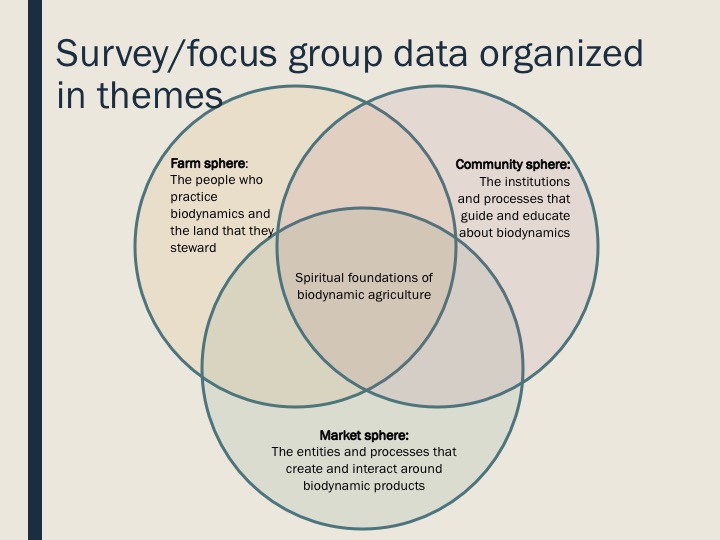
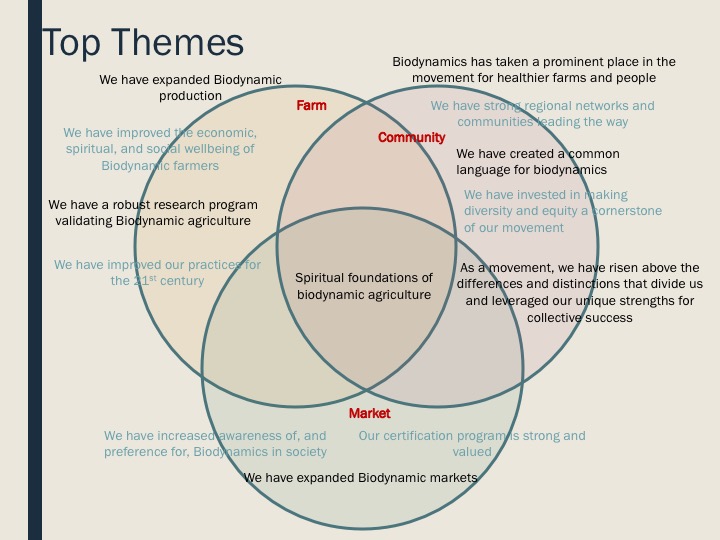
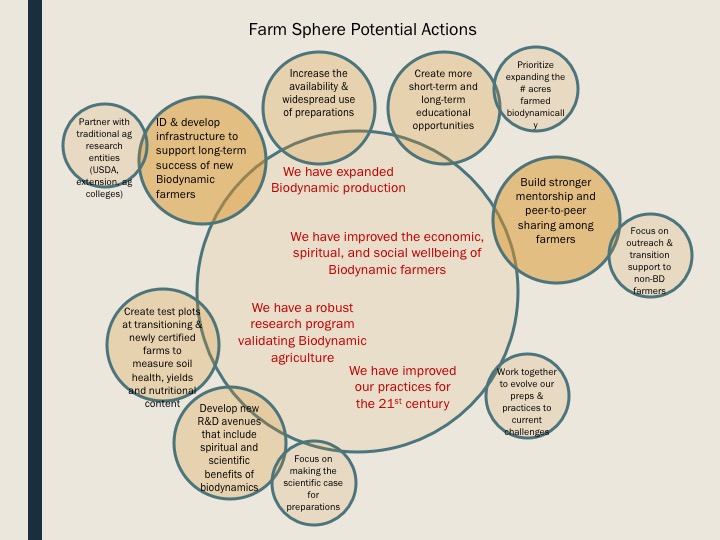
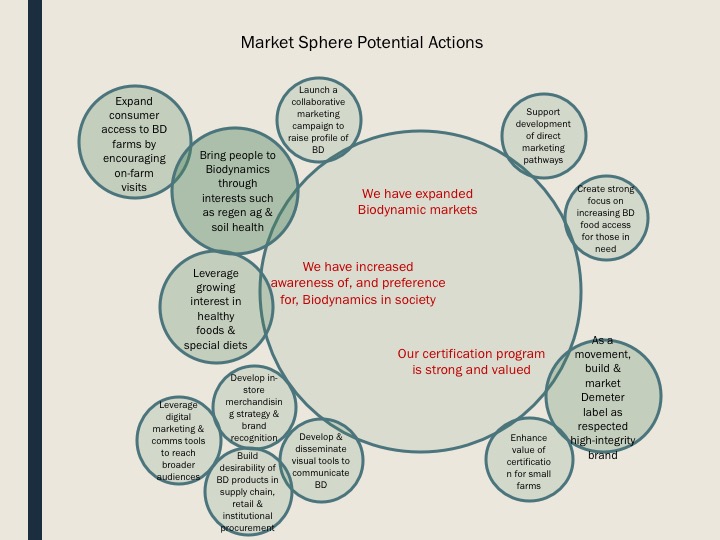
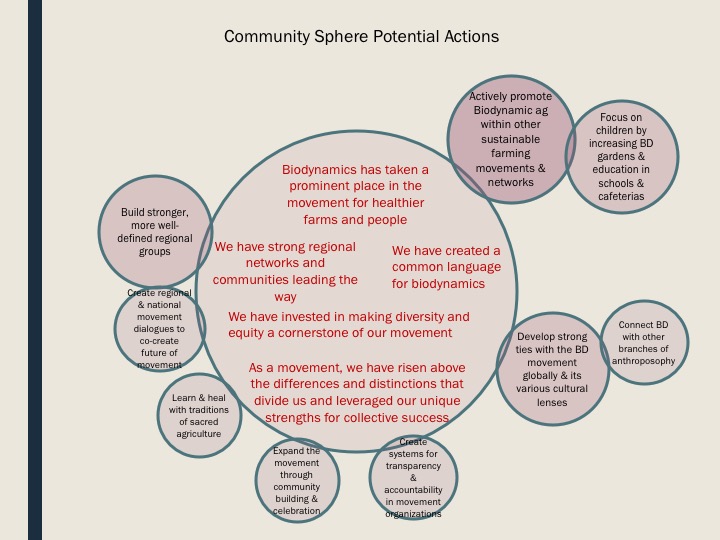
Leadership Summit
In September 2018, the convening group brought together 30 leaders from across the biodynamic movement, meeting for two full and intense days at Paicines Ranch in California. Together, we reflected on what was learned through the inquiry phase of the project and surfaced additional insights, tensions, and questions that are alive in the biodynamic movement today.
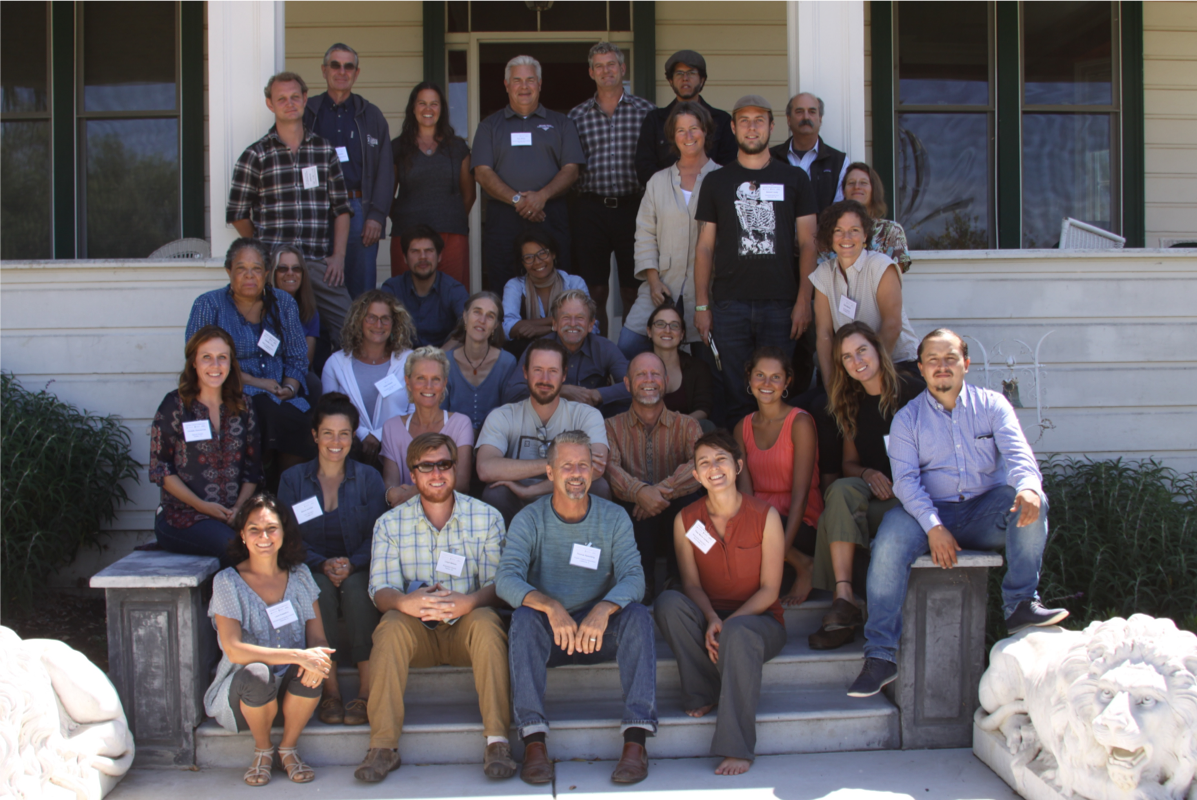
Phase Three: Reflection
Following the summit, the convening group together with the Ag Innovations team worked to integrate and understand all that happened in the previous phases of the project, and to determine what to bring forward to our community at the conference in November. In addition to wealth of aspirations and potential action steps identified and prioritized through the focus groups and survey, a clear outcome of this process was to surface some important tensions and questions living in our community. The convening group distilled these into the following seven courageous questions:
- How can we build alignment towards an inspiring future while honoring the natural biodiversity of perspectives in the movement?
- How can we share biodynamics with more farmers, gardeners, and consumers while maintaining the integrity of Biodynamic food and practices?
- How can we deepen and evolve the spiritual foundations of biodynamics while keeping our doors open and not limiting the growth of the movement?
- How can we engage with current market and economic realities and work to transform them at the same time?
- How can we hold certification and the use of "Biodynamic" in a way that supports the needs of all farmers and consumers?
- How can we strengthen what is unique in biodynamics while building stronger bridges with the wider sustainable, organic, and regenerative agriculture movements?
- How can we best integrate social justice work in the biodynamic movement?
For more on the tensions that lead to each of these questions, please see the slides from the conference presentation.
At the 2018 Biodynamic Conference: Community Integration and Sharing
After the convening group presented the Biodynamic Movement Visioning Project to attendees at the 2018 Biodynamic Conference, we invited all participants to explore how they can help co-create the future of biodynamics.
We asked each individual to begin by silently reflecting on two questions:
What is alive in you now?
What do you see as your role in co-creating the future of biodynamics?
Next, participants shared their reflections in pairs and then in groups of four. Finally, we invited participants to share what they heard in their small groups back out with the hundreds gathered for the session. Dozens of individuals spoke, sharing a wide range of reflections on what they see in the movement, as well as their own roles.
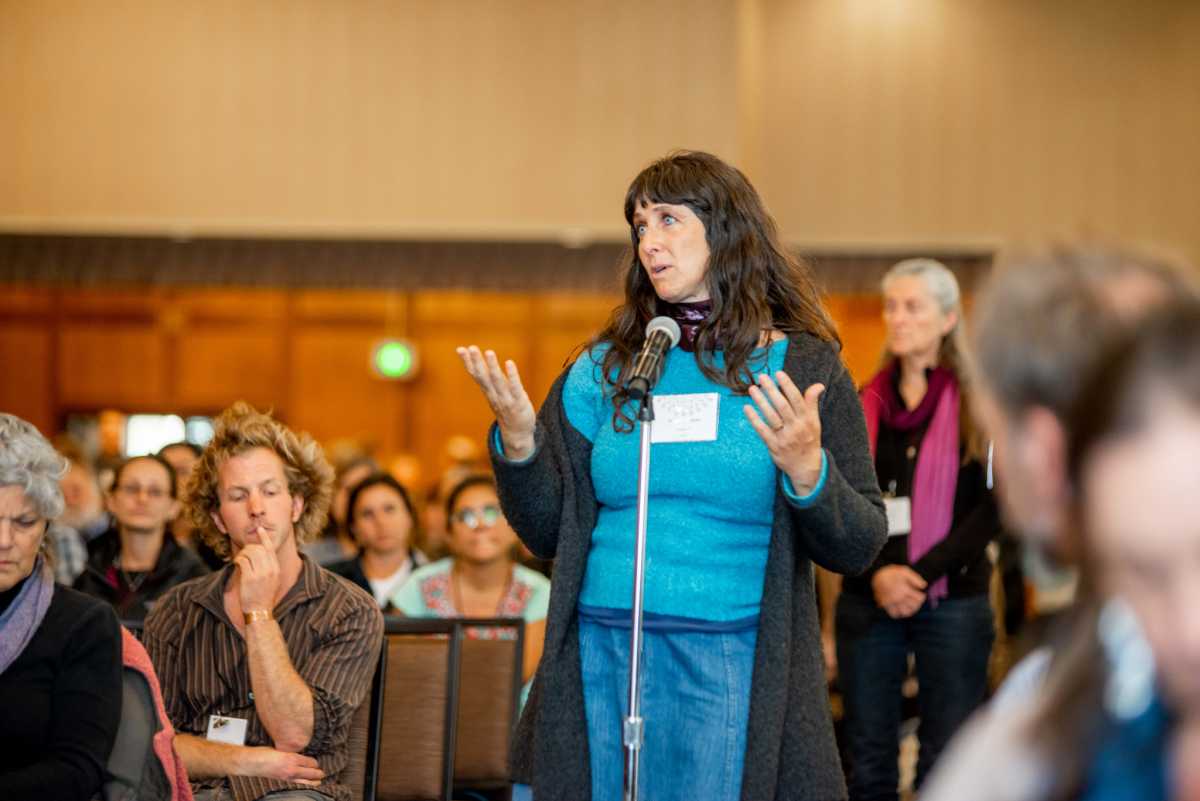
(Broken Banjo Photography)
Notes from a few highlights captured from the community sharing:
- Clear light, full and bright: before we decide on what to do.
- The inclusion of social justice and biodynamics should not be an either/or question.
- The cost of certification cannot exceed the value-added gain from being certified.
- Presenting our work in a way that is visual but not superficial.
- Deepening can also help us grow in a healthy way — it does not need to create restrictions.
- Differentiating between Biodynamic and organic, and showing it's important.
- There is a lack of awareness of biodynamics even among graduates of Waldorf schools.
- How do we walk in complexity?
- Creating big movement consciousness, understanding who we are on a bigger level.
- More important than a label or a name is our love for the planet, which we are meant to take care of. Let us unify with all communities and movements who share this same guiding principle no matter what external divisions try to separate us.

Add new comment